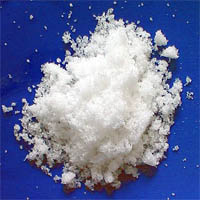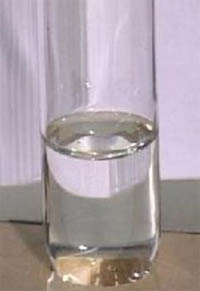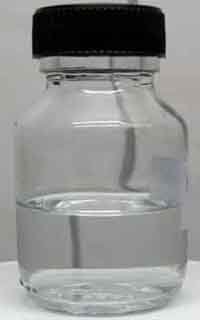
Acetic acid
Acetic acid belongs to organic acids and is one of the oldest. It refers to carboxylic acids - substance with carboxyl group COOH in the molecules, associated with a carbon atom.
Carboxylic acids are capable of being dissociated in an aqueous medium (hydrolysis). But this process is not going completely. All organic acids are weak. For example, acetic acid СH3COOH dissociates in water to form hydrogen cation and acetate anion СH3COO:
СH3COOH ↔ СH3COO- + H+

Properties of acetic acid
Acetic acid forms salts that are called acetates (for example, you might hear the name "sodium acetate" СH3COONa). In stores, this acid (5%) has name "Ocet". Previously, this acid was called wood acid, as it was got from wood. When cooling the released vapors from the wood, liquid was got, resin and tar gradually precipitated, and a dark brown solution remained on top - is a mixture of acetic acid and methyl alcohol (in another way - wood alcohol СH3OH), acetone (СH3)2CO, water and some other substances. To separate acetic acid, the most common chalk was added to this liquid (CaCO3). As a result of this reaction, a chemical reaction occurred, which resulted in a precipitate (СH3COO)2Ca - calcium acetate:
( CaCO3 + 2СH3COOH → (СH3COO)2Ca +H2O +CO2
Calcium acetate was then dissolved in sulfuric acid
(СH3COO)2Ca + H2SO4 → 2СH3COOH + CaSO4(sediment)
The modern method of producing acetic acid is the oxidation of acetic aldehyde СH3CHO with oxygen in the presence of a catalyst (a substance accelerating the chemical reaction) of manganese acetate (СH3COO)2Mn:
СH3CHO + O2 → 2СH3COOH
Acetic acid СH3COOH is used not only as a food additive, but also as a semi-finished product for the production of substances in the chemical industry. Without it, you can not make any acetate silk, or cellophane, or aspirin, as well as many other substances.
Other carboxylic acids also have one or more carboxyl groups - COOH.
Formic acid H-COOH first received from acidic secretions of the ants the valeric acid С4H9-COOH - from the juice of the root of the medicinal plant Valerian. Similarly, from juice got Apple, sorrel and lemon acids. But milk is got with fermentation of milk and sauerkraut harvesting.
Another very important and necessary - ascorbic acid (or Vitamin C)

Formic acid
Formic acid H-CO-OH - colorless liquid with a characteristic pungent smell. This substance boils at temperature 100,50C. Formic acid is able to recover silver from its oxide (have You ever used it to clean the black deposits on the silver products - the black coating is silver oxide Ag2O). Reaction is going to:
H-CO-OH + Ag2O → 2Ag + H-CO-O-OH (the reaction takes place in the presence of ammonia NH3), and the reaction goes further with the formation of silver metal, carbon dioxide and water, т.е. H-CO-O-OH + Ag2O → 2Ag + H2O + CO2
But get formic acid with the reaction of carbon monoxide (CO) and sodium hydroxide (NaOH). Reaction is going to:
CO + NaOH → H-CO-ONa
Then the material is H-CO-ONa treated with sulfuric acid:
H-CO-ONa + H2SO4 → NaHSO4 + H-COOH